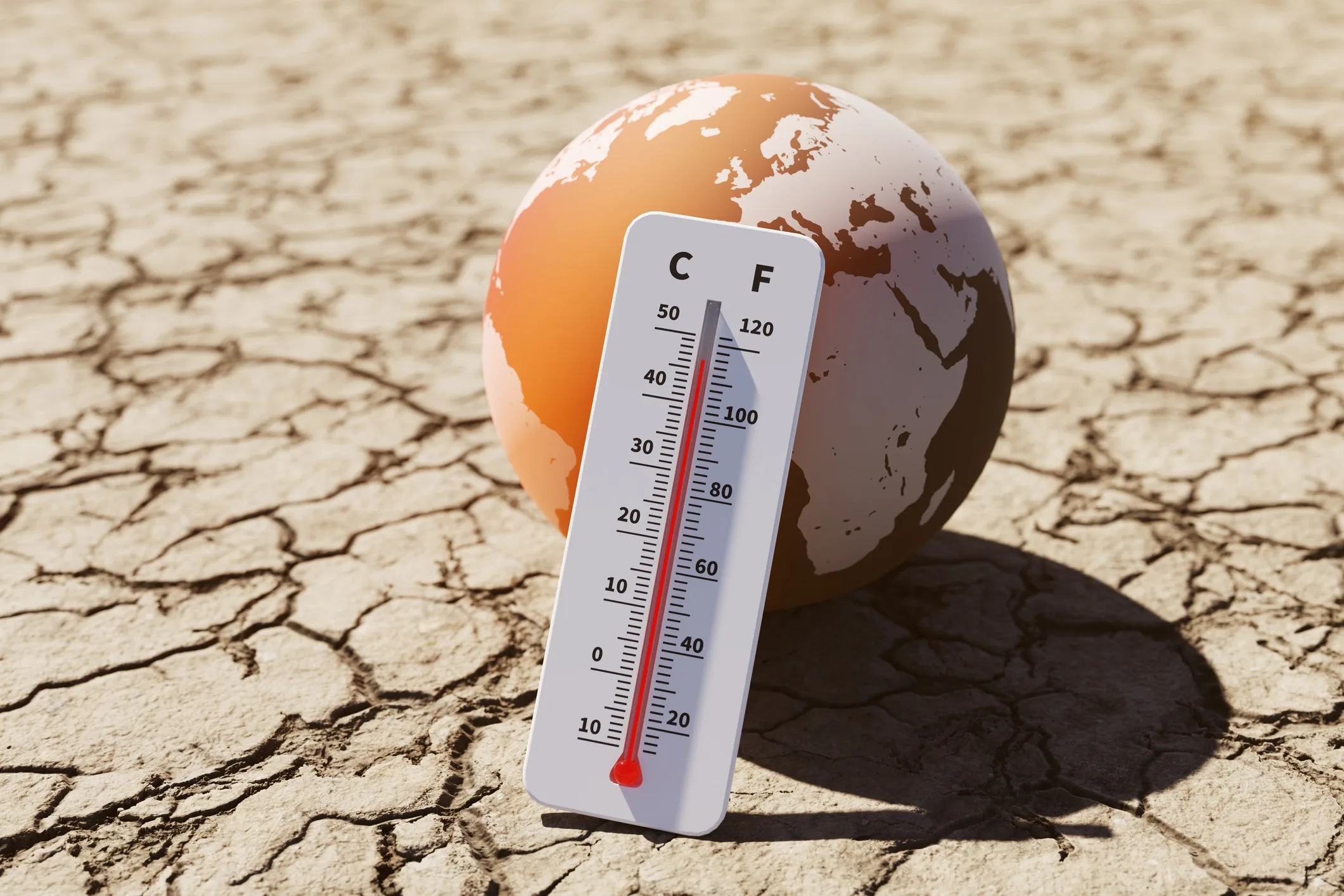Home>Weather and Climate>Florida Monthly Temperature: A Comprehensive Guide


Weather and Climate
Florida Monthly Temperature: A Comprehensive Guide
Published: March 3, 2024
Plan your trip to Florida with our comprehensive guide to the monthly temperature. Learn about the weather and climate to make the most of your visit. Discover the best times to enjoy the sunshine and outdoor activities.
(Many of the links in this article redirect to a specific reviewed product. Your purchase of these products through affiliate links helps to generate commission for Temperatures.com, at no extra cost. Learn more)
Table of Contents
- Introduction
- Understanding Florida's Climate
- Average Monthly Temperatures in Northern Florida
- Average Monthly Temperatures in Central Florida
- Average Monthly Temperatures in Southern Florida
- Factors Affecting Florida's Monthly Temperatures
- Tips for Dealing with Florida's Monthly Temperature Changes
- Conclusion
Introduction
Florida, known for its stunning beaches, vibrant culture, and diverse ecosystems, experiences a unique and varied climate throughout the year. From the balmy shores of Miami to the lush landscapes of Tallahassee, the Sunshine State offers a wide spectrum of weather patterns that cater to different preferences. Understanding the monthly temperature variations in Florida is crucial for residents, tourists, and businesses alike, as it allows for better preparation and planning.
In this comprehensive guide, we will delve into the intricacies of Florida's monthly temperatures, providing valuable insights into the distinct climate zones across the state. From the cooler northern regions to the subtropical southern areas, each part of Florida presents its own set of temperature dynamics, influenced by a myriad of factors such as proximity to the coast, prevailing winds, and seasonal weather patterns.
By exploring the average monthly temperatures in different regions of Florida, we aim to equip readers with a deeper understanding of the state's climate, enabling them to make informed decisions when it comes to travel, outdoor activities, and overall lifestyle choices. Additionally, we will examine the various factors that contribute to Florida's monthly temperature fluctuations, shedding light on the intricate interplay of natural elements that shape the state's weather patterns.
Whether you're a Florida native seeking to gain a deeper appreciation for your state's climate or a visitor planning a trip to the Sunshine State, this guide will serve as a valuable resource for navigating the diverse and dynamic monthly temperature variations that define Florida's meteorological tapestry. Join us as we embark on a journey through the captivating world of Florida's monthly temperatures, uncovering the nuances and intricacies that make the Sunshine State a truly unique and compelling destination.
Understanding Florida's Climate
Florida's climate is characterized by its remarkable diversity, shaped by a combination of geographical features, oceanic influences, and atmospheric dynamics. The state's strategic location between the Gulf of Mexico and the Atlantic Ocean, coupled with its proximity to the Tropic of Cancer, creates a rich tapestry of climatic conditions that vary significantly across different regions.
The northern part of Florida experiences a humid subtropical climate, with mild winters and hot, humid summers. As one moves southward, the climate transitions into a true tropical climate, marked by consistently warm temperatures throughout the year. Central Florida, including cities like Orlando and Tampa, embodies a blend of these climatic influences, resulting in a unique subtropical climate with distinct seasonal variations.
The state's extensive coastline and numerous inland water bodies play a pivotal role in moderating temperatures, contributing to the characteristic warmth and humidity that define Florida's climate. The Gulf Stream, a powerful ocean current that flows along the state's eastern coast, exerts a significant influence on the region's weather patterns, helping to maintain relatively warm sea surface temperatures and impacting the climate of coastal areas.
Florida's climate is also shaped by its susceptibility to extreme weather events, including hurricanes and tropical storms. The state's vulnerability to these phenomena underscores the dynamic nature of its climate, with seasonal fluctuations and the potential for rapid shifts in weather patterns.
Understanding Florida's climate entails recognizing the intricate interplay of factors such as latitude, proximity to water bodies, prevailing winds, and the influence of global weather systems. This multifaceted blend of elements contributes to the state's diverse climate zones, each offering its own set of unique characteristics and seasonal variations.
By gaining a deeper understanding of Florida's climate, residents and visitors can better prepare for the distinct weather patterns they are likely to encounter. Whether it's the balmy breezes of Miami, the subtropical climate of Orlando, or the milder temperatures of Tallahassee, Florida's climate presents a captivating mosaic of meteorological phenomena that continues to fascinate and inspire those who experience it.
Average Monthly Temperatures in Northern Florida
Northern Florida, encompassing cities such as Jacksonville, Tallahassee, and Gainesville, experiences a distinct seasonal temperature pattern characterized by relatively mild winters and warm, humid summers. The region's proximity to the Gulf of Mexico and the Atlantic Ocean, coupled with its latitude, contributes to the unique thermal dynamics that shape its monthly temperature variations.
In January, the average high temperature in Northern Florida hovers around 64°F (17.8°C), with nighttime lows averaging around 42°F (5.6°C). As the winter months progress, February sees a gradual increase in temperatures, with average highs reaching approximately 67°F (19.4°C) and lows around 45°F (7.2°C). March marks the transition to spring, bringing milder conditions with average highs of 73°F (22.8°C) and lows of 50°F (10°C).
The arrival of April heralds the onset of warmer weather, with average high temperatures climbing to around 79°F (26.1°C) and lows hovering at 56°F (13.3°C). May ushers in the full embrace of spring, with average highs reaching 85°F (29.4°C) and lows settling at 63°F (17.2°C). The summer months of June, July, and August bring the peak of Northern Florida's warmth, with average high temperatures ranging from 89°F to 92°F (31.7°C to 33.3°C) and nighttime lows in the mid-70s°F (23.9°C to 25.6°C).
As the summer transitions into fall, September maintains its warmth with average highs around 87°F (30.6°C) and lows of 70°F (21.1°C). October sees a gradual cooling trend, with average highs dropping to 80°F (26.7°C) and lows at 62°F (16.7°C). November brings crisper temperatures, with average highs of 72°F (22.2°C) and lows around 52°F (11.1°C). Finally, December marks the arrival of winter, with average high temperatures at 66°F (18.9°C) and lows of 45°F (7.2°C).
The monthly temperature fluctuations in Northern Florida reflect the region's transition through distinct seasonal phases, offering a diverse range of thermal experiences for residents and visitors alike. From the mild winters that provide a reprieve from the sweltering summer heat to the gradual emergence of spring's warmth, Northern Florida's monthly temperature variations paint a vivid portrait of the region's climatic tapestry.
Average Monthly Temperatures in Central Florida
Central Florida, encompassing vibrant cities such as Orlando, Tampa, and Lakeland, boasts a subtropical climate characterized by distinct seasonal variations in temperature. The region's unique geographical position, nestled between the Gulf of Mexico and the Atlantic Ocean, contributes to its diverse and dynamic monthly temperature patterns.
In January, Central Florida experiences average high temperatures of around 71°F (21.7°C) and lows of approximately 50°F (10°C). As February unfolds, the region sees a gradual uptick in temperatures, with average highs reaching 73°F (22.8°C) and lows hovering at 52°F (11.1°C). March marks the transition to spring, bringing milder conditions with average highs of 77°F (25°C) and lows of 56°F (13.3°C).
As spring gives way to the full embrace of summer, April ushers in warmer weather, with average high temperatures climbing to around 82°F (27.8°C) and lows settling at 61°F (16.1°C). May brings the peak of spring warmth, with average highs reaching 87°F (30.6°C) and lows maintaining at 66°F (18.9°C). The summer months of June, July, and August bring the characteristic heat of Central Florida, with average high temperatures ranging from 90°F to 92°F (32.2°C to 33.3°C) and nighttime lows in the mid-70s°F (23.9°C to 25.6°C).
As the summer gradually transitions into fall, September maintains its warmth with average highs around 89°F (31.7°C) and lows of 71°F (21.7°C). October sees a gradual cooling trend, with average highs dropping to 84°F (28.9°C) and lows at 64°F (17.8°C). November brings further cooling, with average highs of 78°F (25.6°C) and lows around 57°F (13.9°C). Finally, December marks the arrival of winter, with average high temperatures at 73°F (22.8°C) and lows of 52°F (11.1°C).
The monthly temperature fluctuations in Central Florida encapsulate the region's transition through distinct seasonal phases, offering a diverse range of thermal experiences for residents and visitors. From the mild winters that provide a pleasant contrast to the summer heat to the gradual emergence of spring's warmth, Central Florida's monthly temperature variations paint a vivid portrait of the region's climatic tapestry.
Average Monthly Temperatures in Southern Florida
Southern Florida, encompassing vibrant cities such as Miami, Key West, and Fort Lauderdale, embodies a true tropical climate characterized by consistently warm temperatures throughout the year. The region's proximity to the Tropic of Cancer, coupled with its coastal location and oceanic influences, contributes to its distinct and relatively stable monthly temperature patterns.
In January, Southern Florida experiences average high temperatures of around 76°F (24.4°C) and lows of approximately 61°F (16.1°C). As February unfolds, the region sees a gradual uptick in temperatures, with average highs reaching 77°F (25°C) and lows hovering at 63°F (17.2°C). March marks the transition to spring, bringing milder conditions with average highs of 79°F (26.1°C) and lows of 65°F (18.3°C).
As spring gives way to the full embrace of summer, April ushers in warmer weather, with average high temperatures climbing to around 82°F (27.8°C) and lows settling at 68°F (20°C). May brings the peak of spring warmth, with average highs reaching 85°F (29.4°C) and lows maintaining at 71°F (21.7°C). The summer months of June, July, and August bring the characteristic heat of Southern Florida, with average high temperatures ranging from 88°F to 90°F (31.1°C to 32.2°C) and nighttime lows in the mid-70s°F (23.9°C to 25.6°C).
As the summer gradually transitions into fall, September maintains its warmth with average highs around 87°F (30.6°C) and lows of 75°F (23.9°C). October sees a gradual cooling trend, with average highs dropping to 85°F (29.4°C) and lows at 72°F (22.2°C). November brings further cooling, with average highs of 81°F (27.2°C) and lows around 68°F (20°C). Finally, December marks the arrival of winter, with average high temperatures at 78°F (25.6°C) and lows of 64°F (17.8°C).
The monthly temperature fluctuations in Southern Florida encapsulate the region's transition through distinct seasonal phases, offering a consistent range of thermal experiences for residents and visitors. From the mild winters that provide a pleasant contrast to the summer heat to the gradual emergence of spring's warmth, Southern Florida's monthly temperature variations paint a vivid portrait of the region's climatic tapestry.
Factors Affecting Florida's Monthly Temperatures
Florida's monthly temperatures are influenced by a myriad of factors that collectively shape the state's diverse and dynamic climate. These factors play a crucial role in determining the range of temperature variations experienced across different regions of the Sunshine State. Understanding the interplay of these elements provides valuable insights into the underlying mechanisms that govern Florida's monthly temperature patterns.
-
Geographical Location: Florida's geographical position, extending from the subtropical latitudes in the north to the tropical latitudes in the south, contributes significantly to its monthly temperature variations. The state's proximity to the Gulf of Mexico and the Atlantic Ocean, along with its extensive coastline, influences the moderating effects of maritime air masses, leading to milder winters and warmer summers, particularly in coastal areas.
-
Oceanic Influences: The presence of the Gulf Stream, a powerful ocean current that flows along Florida's eastern coast, exerts a substantial impact on the state's monthly temperatures. The Gulf Stream helps maintain relatively warm sea surface temperatures, which, in turn, contribute to the moderation of coastal temperatures, especially during the winter months. Additionally, the interaction between oceanic currents and prevailing winds influences the distribution of heat and moisture across the region, shaping Florida's climate dynamics.
-
Atmospheric Circulation: Florida's monthly temperatures are influenced by atmospheric circulation patterns, including the movement of air masses, prevailing winds, and the influence of global weather systems. The interaction between high-pressure systems and low-pressure systems, coupled with the seasonal shift in prevailing wind directions, contributes to the seasonal variations in temperature experienced across the state. For instance, the influx of maritime tropical air masses during the summer months and the intrusion of continental polar air masses during the winter months play a pivotal role in shaping Florida's temperature patterns.
-
Topographical Features: While Florida is predominantly characterized by its flat terrain, subtle variations in elevation and land cover can impact local temperature patterns. Inland areas may experience slightly cooler temperatures compared to coastal regions, owing to differences in land-sea thermal contrasts and the influence of urban heat islands. Additionally, the presence of inland water bodies, such as lakes and rivers, can contribute to localized temperature moderation, particularly in areas with abundant water resources.
-
Seasonal Weather Phenomena: Florida's monthly temperatures are subject to the influence of seasonal weather phenomena, including the occurrence of tropical storms, hurricanes, and frontal systems. These weather events can lead to abrupt fluctuations in temperature, particularly during the transitional seasons of spring and fall. The potential impact of these phenomena on monthly temperature variations underscores the dynamic and occasionally unpredictable nature of Florida's climate.
By considering these factors, it becomes evident that Florida's monthly temperatures are the product of a complex interplay of geographical, oceanic, atmospheric, and seasonal elements. The convergence of these factors gives rise to the diverse and captivating monthly temperature patterns that define the Sunshine State's climatic tapestry.
Tips for Dealing with Florida's Monthly Temperature Changes
Navigating Florida's monthly temperature changes requires a proactive approach to ensure comfort and well-being throughout the year. Whether you're a resident or a visitor, adapting to the diverse thermal dynamics of the Sunshine State can enhance your overall experience. Here are valuable tips to help you effectively manage Florida's monthly temperature variations:
-
Layering Clothing: Given the fluctuating temperatures, especially during the transitional seasons, layering clothing allows for easy adjustment to changing weather conditions. Lightweight, breathable layers are ideal for accommodating both warm days and cooler evenings, ensuring comfort throughout the day.
-
Stay Hydrated: Florida's warm and humid climate demands adequate hydration. Whether you're exploring the outdoors or simply going about your daily activities, it's essential to stay hydrated to combat the effects of heat and humidity. Carrying a reusable water bottle and regularly consuming fluids can help prevent dehydration.
-
Sun Protection: With abundant sunshine year-round, protecting your skin from UV rays is crucial. Applying sunscreen, wearing sunglasses, and using hats or umbrellas can shield you from the sun's intense rays, reducing the risk of sunburn and long-term skin damage.
-
Adapt Your Home Environment: Adjusting your home environment to accommodate temperature changes is essential for comfort. Utilize fans, air conditioning, or heating systems as needed to maintain a pleasant indoor climate. Ensuring proper insulation and sealing any drafts can also contribute to temperature control.
-
Plan Outdoor Activities Wisely: When engaging in outdoor activities, consider the timing to avoid the peak heat of the day. Early mornings or late afternoons often offer more comfortable conditions for outdoor pursuits such as hiking, sightseeing, or beach outings.
-
Be Weather-Aware: Stay informed about weather forecasts and potential changes in weather patterns. Being aware of upcoming temperature fluctuations, rain showers, or thunderstorms allows for better preparation and adaptation to the prevailing conditions.
-
Embrace Seasonal Cuisine: Exploring and embracing seasonal cuisine can add a delightful dimension to your experience of Florida's monthly temperature changes. Enjoying refreshing citrus fruits and hydrating foods during warmer months, and savoring heartier dishes during cooler periods, can complement your culinary journey.
-
Respect Natural Habitats: Florida's diverse ecosystems are sensitive to temperature variations. When exploring natural areas, such as parks and preserves, it's important to respect the local flora and fauna. Adhering to designated trails and observing any guidelines for wildlife interaction contributes to the preservation of these unique environments.
By incorporating these tips into your daily routine and lifestyle, you can effectively manage and adapt to Florida's monthly temperature changes, ensuring a more enjoyable and comfortable experience in the Sunshine State.
Conclusion
In conclusion, Florida's monthly temperature variations offer a captivating glimpse into the state's diverse and dynamic climate. From the mild winters of Northern Florida to the consistently warm temperatures of Southern Florida, each region presents a unique tapestry of seasonal thermal experiences. The interplay of geographical, oceanic, atmospheric, and seasonal factors collectively shapes Florida's monthly temperature patterns, contributing to the state's rich climatic diversity.
Understanding and appreciating Florida's monthly temperatures is essential for residents, visitors, and businesses, as it enables better preparation and adaptation to the distinct thermal dynamics encountered throughout the year. Whether it's the need to layer clothing during transitional seasons, staying hydrated in the warm and humid climate, or adapting home environments to accommodate temperature changes, proactive measures can enhance comfort and well-being in the face of Florida's monthly temperature fluctuations.
Moreover, the influence of natural phenomena such as the Gulf Stream, atmospheric circulation patterns, and seasonal weather events underscores the dynamic and occasionally unpredictable nature of Florida's climate. This complexity adds a layer of intrigue to the state's meteorological landscape, inviting exploration and appreciation of the intricate mechanisms that govern its monthly temperature variations.
As residents and visitors navigate Florida's monthly temperature changes, embracing the diverse seasonal cuisine, respecting natural habitats, and staying weather-aware can enrich their experiences and foster a deeper connection with the Sunshine State's unique climatic tapestry. By incorporating these insights and tips into daily life, individuals can effectively manage and adapt to Florida's monthly temperature variations, ensuring a more enjoyable and comfortable experience in this captivating region.
Ultimately, Florida's monthly temperatures serve as a testament to the state's climatic allure, offering a compelling blend of warmth, diversity, and natural beauty. Whether basking in the subtropical embrace of Central Florida or savoring the tropical ambiance of Southern Florida, each monthly temperature variation contributes to the vibrant mosaic that defines the Sunshine State's meteorological identity. Embracing these fluctuations with preparedness and appreciation allows individuals to immerse themselves fully in the captivating journey through Florida's monthly temperature changes, forging unforgettable memories and a deeper connection with this remarkable coastal paradise.














